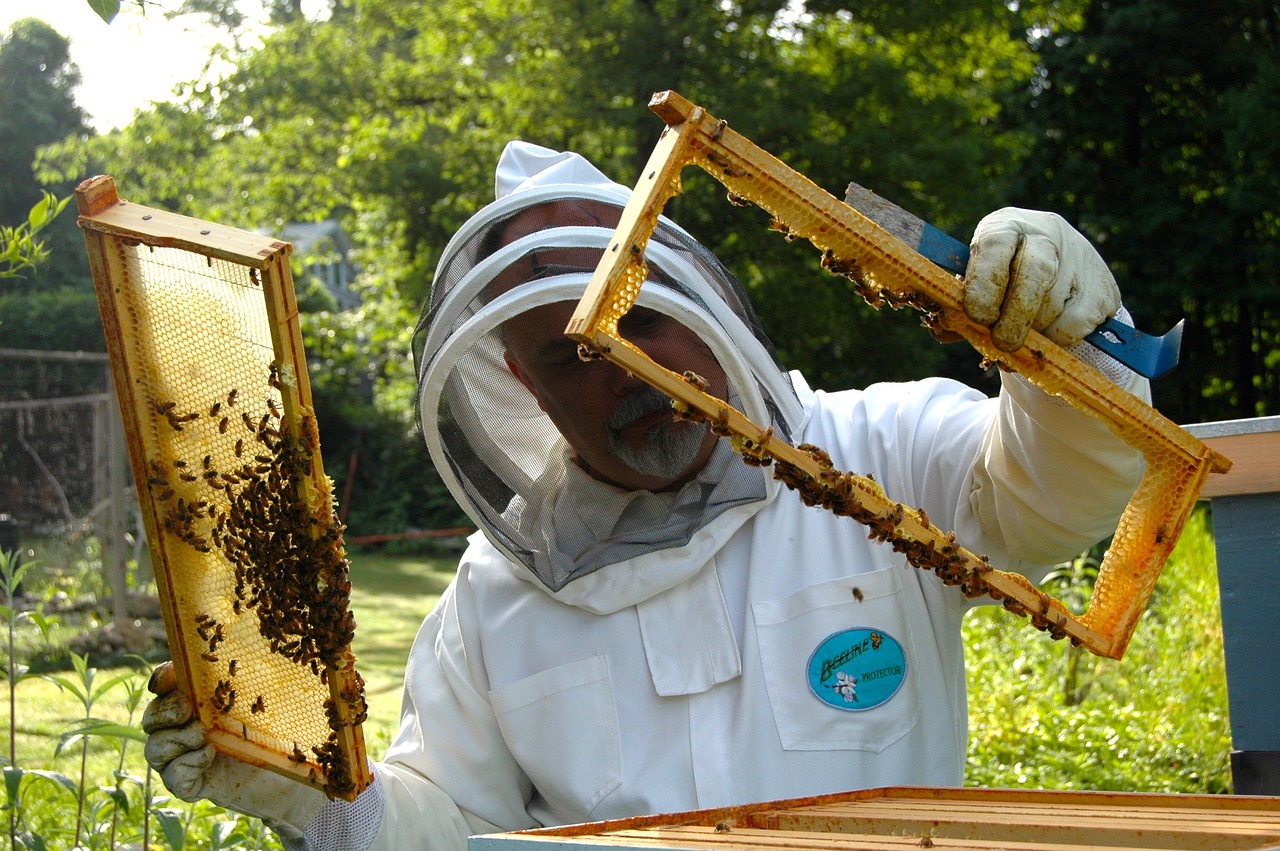Beekeepers will experience moments of excitement and moments of loss. When a beekeeper has a beehive that is lost, it is often due to a mite infestation. Varroa mites infect hives and spread a virus that can wipe out a colony. Worse, these mites can also spread the disease among beehives within an apiary and beyond. The possibility of a varroa virus getting into hives keeps beekeepers on their toes about hive monitoring because their critical role is to protect bees from mite infestations. Once mites are found or mite activity is identified, it is a race to treat and exterminate these disease-carrying mites immediately.
Unfortunately, it is often the death of a colony that alerts the beekeeper to a potential problem. Regular monitoring is becoming more of the standard for beekeepers, and using a variety of methods to do this makes it a manageable task for a motivated beekeeper. Fungus and bacteria from infected mites spread quickly, and bees become weak, ill, and unable to fight off the virus. In this sad weakened state, bees are more vulnerable to other threats, like aggressive wasps that want to take them out.
Signs of Infected Bees in the Beehive
It is helpful to know what to look for, and the more seasoned beekeepers will have more experience to base new observations on. However, one sign that is continually reported as indicative of the varroa mite virus is shiny and greasy bees. The grease coating prevents bees from flying, and they have been known to appear as shivering as if they are cold or afraid. Shriveled up or split wings can also be a sign of the varroa virus. When the queen bee turns black, this is something beekeepers watch for because it likely means the virus is active in the hive.
Regular Monitoring Reduces Risk of Varroa Virus
Beekeepers are familiar with mite activity because almost every beehive will have them at some point. However, regular monitoring and management can prevent mites from becoming an issue and bringing infection to your bees. Mites spread more when there are more of them, so if beekeepers can keep the number of mites to a minimum, they can successfully manage their beehives. Preventing population surges is the best-known way to keep mite control in order. The best beekeepers continue to navigate the best proactive approach without using toxic chemicals. A completely infested beehive will need to be chemically treated with harsh chemicals, which means bees die, and pesticides can also spread if not applied correctly. In extreme scenarios, this may be necessary. However, just killing hives when infected is not sustainable or how we should treat bees. Beekeepers must find solutions to prevent infected mite infestations to make beekeeping more manageable and enjoyable.
Seasonal treatments are timed as mite populations are expected to increase, taking into account weather, the environment, and other factors that make mite raids somewhat predictable. Beekeepers will also perform routine measurements of existing mites in the hive. Measuring mite activity, especially when treating to reduce numbers, is critical so that beekeepers know if the treatments are working. Why keep doing something if it is not helping or making a difference?
How Do Beekeepers Measure Mites?
How beekeepers measure mite activity varies greatly. There are some tried and true methods that many beekeepers use, including using sticky boards at the bottom of the hive and soaking bees in sugar and alcohol. Beekeepers take many factors into consideration when choosing a technique, like colony size, the hive’s cleanliness, and if it is in the brooding stage when they want to measure.
The sticky board approach takes a couple of weeks at minimum and involves counting the number of mites on the sticky boards. The boards are covered with petroleum jelly so that falling mites are captured and counted. As imagined, this takes patience, but everything about keeping takes patience and dedication to providing the best care for the bees.
Soaking bees in sugar and alcohol solutions may kill a small number of bees being tested. A solution and bees are put in a jar and shaken vigorously, which will distress them but not necessarily kill them. An alcohol solution will kill the bees, but it does help beekeepers get a snapshot of what is happening in the hive.

Get help with your beehive or bee swarm removal! Call Today 760-224-3040 Or 951-265-8292!
Mites and Bees Co-Exist in Beehives
Mites are a beekeeper’s reality. Taking a proactive approach by regularly monitoring and measuring to determine if and when treatment is necessary is part of the role. If you have beehives or questions about beekeeping and mites in your area, contact D-Tek – the only humane and live bee removal service in Southern California!
Call us at 760-224-3040!
